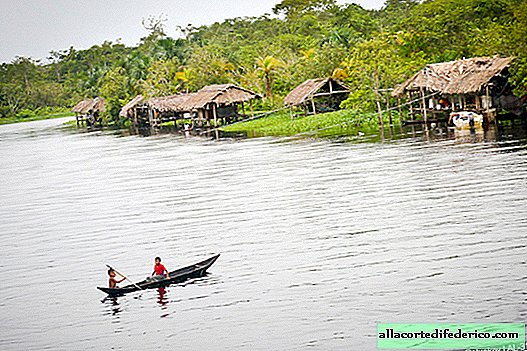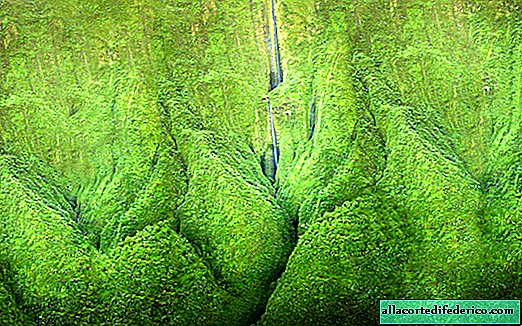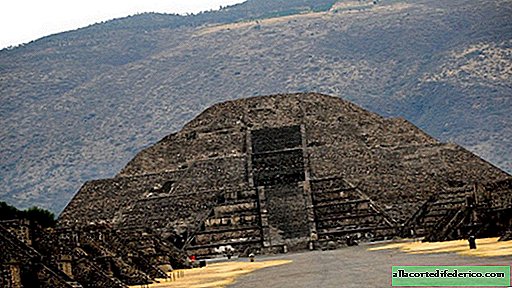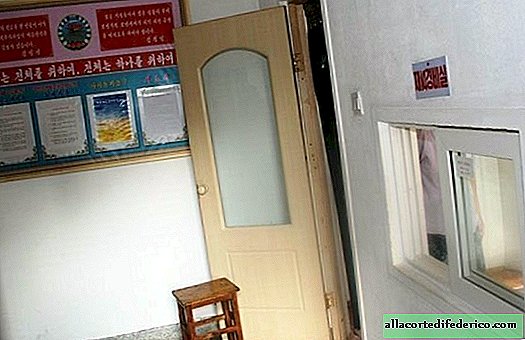7 kilometers of champagne bottles: Golitsyn cellars in the New World
1.5 billion rubles. Such is the price of one of the visiting cards of the Crimea - the New World factory.
This is the peninsula's oldest winery, which was founded by Lev Golitsyn himself and which supplied champagne to the imperial table. In addition to history, the plant’s feature is that champagne is made in the classical way, and 7 kilometers of adits were cut down for storage and aging in the mountain.
Why are Crimeans indignant?
They are afraid that, falling into private hands, the plant will change the classical technology for the sake of cheap mass production. They are afraid that the plant will be sold at a lower price. And just against the fact that the "mainland" owners will come ...
How it will be, time will tell, but for now I’ll tell and show what exactly is the “New World” that is known and respected not only in Crimea, but also in the world.
At the beginning of the story, a little history.
It all started with the fact that once a rich Russian prince had an irresistible desire to be no worse than some foreign craftsmen.
His name was Lev Sergeevich Golitsyn. And he planned to plug the belt of French champagne producers.
In 1878, he settled in the Crimea, in a village called Paradise, which is now called the New World.
Prince Golitsyn zealously took up the matter - here they blew up the mountains, hollowed the mountain slopes, and harvested juniper and pine stakes.
Thus the first vineyards of the New World were born.
Around the 80s of the XIX century, the first experiments with champagne began, and in 1896 Golitsyn champagne was served during the coronation dinner on the occasion of the accession to the throne of Tsar Nicholas II.
After this event, the prince’s champagne was called “Coronation”, and already under this brand the new-world champagne of 1899 edition at the World Exhibition in Paris in 1900 received the highest award - the Grand Prix Cup.
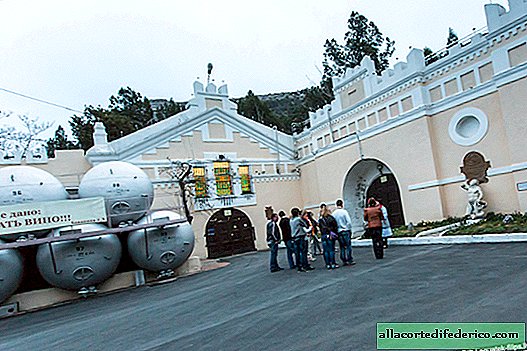
Realizing that something was starting to work out and the conditions for the “right” champagne had to be created, in the 90s of the XIX century Golitsyn decided to send the indefatigable power of the workers who had previously expanded the area under the vineyards to a new direction - cutting down the wine cellars in the mountain.
But local workers could not quickly and efficiently hammer the rock, because they brought here migrant workers, metro builders - Turkish experts in mining and blasting and tunnels.
The first adits had a length of about 3 versts, and the construction of the first stage was completed in 1903.

Novosvetsky tunnels have load-bearing walls made of wild stone, and the supports, niches for wine and arches are made of Kerch white stone. To date, two stone wineries have been preserved, connected by a stone facade of the main entrance. One of them was with a two-story basement and a number of tunnels in clay soil, sometimes with separate entrances. The ventilation system is organized in such a way that natural air flows are used. The main advantage of these basements is the stable temperature at any time of the year and in any weather above - + 12-14 degrees
In the 80s of the last century, basements were reconstructed, adding a number of tunnels and bringing their total duration to 7 kilometers. The work was carried out by workers from the Kharkov metro.

At the time of Lev Golitsyn, production capacities amounted to about 60 thousand bottles of champagne per year.
On the one hand, a little. But on the other, you just need to imagine what is behind this figure.
Champagne in the New World is made in a classic way. It is also called bottle, or shampenuaz. It originated in France about 300 years ago and is a true classic and an indicator of the perfection of a champagne producer.
The method consists in the fact that the fermentation process takes place in hermetically sealed bottles of dry wine, which contains yeast and sugar. This method guarantees the highest quality product.
Nowadays, the more common method is the acratophore or reservoir method. At one time it was a real revolution, and thanks to it, champagne turned from a drink available only to the highest aristocracy, into wine that everyone can afford. With this method, wine materials undergo a secondary fermentation (champagne) operation not in bottles, but in large tanks and only then they are bottled and immediately sold. Fast, cheap, mass ...
But back to our basements. Everything is different here. Here is a classic and bottled champagne ... And there are only 4 such enterprises in the territory of the former USSR - the New World, Artemovsk, Abrau-Durso and Cricova (the youngest).

Here, the wine material after initial fermentation is bottled, sealed with a special plastic technical stopper, fixed with an iron holding bracket and sent to the cellars for a three-year exposure.
It is here that these bottles will lie for three years, where the secondary fermentation process will take place in them.
By the way, an interesting fact - a bottle for champagne should withstand a pressure of 17 atmospheres.
No, of course, during the fermentation, such a high pressure does not form inside, because a certain reserve is laid, but nevertheless it is quite high there.
In tunnels, bottles are stacked horizontally in stacks.
As I said above, here in them there is a process of secondary fermentation. Under the influence of yeast and circulation liquor, carbon dioxide is formed in them.
The process itself lasts about 30-40 days, after which the yeast culture dies and breaks down into various compounds. This creates, or rather, forms the aroma of future champagne.

For three years of aging 4 shifts are done. The operation is done manually. Bottles are neatly transferred from one wall to another, forming exactly the same stacks.
At the same time, they take the bottle and shake it gently several times so that the sediment does not stick to the walls of the bottle.

Here it is, the sediment in the bottle.

After shifting, the batch must be marked.
In the first year, two changes are made, in the second and third - one at a time.

On average, each worker transfers up to 3600 bottles per day.

After three years of lying and shifting, the bottles are washed and sent to the next stage.
It’s called remuage ...

Remuage is a sediment reduction on a cork.
Bottles are placed in special music stand machines, placing them with the neck down. Bottles with clarifying wine give a certain angle (approximately 50), which causes the sediment to move to the cork.

A remuyer is a person performing this operation, at the same time grabs two bottles by the bottoms, raising them by about half a centimeter, and easily hits the walls of the music stand with bottles, turning them clockwise in certain sections of the arc.
During the remake, the bottles are tilted more and more. After 6 weeks, they occupy an almost vertical position.

The last operation in the technological chain of champagne production in the classical way is the release of wine from sediment, or degorging. It is carried out by a sharp opening and closing of the cork - during this time gas from the bottle expels the sediment.
After a remuage, the bottles remain in the neck-down position and, in this form, are conveyed for degorging using a special conveyor.
Having removed the bracket when the bottle is tilted, the conductor gradually pulls out the cork and discards it along with the sediment. Foam coming out after the cork is dumped, washes the inner surface of the neck of the bottle, cleaning it.

Bottles with sediment before degassing.

If the wine is transparent and devoid of flaws and vices, the bottle goes to dispense expeditionary liquor in order to obtain a certain brand of wine.
The expeditionary liquor not only gives champagne the necessary sweetness corresponding to the brand, but also participates in the formation of the bouquet, gives the taste of wine softness and harmony.

After the introduction of the expeditionary liquor, the bottles are corked with new cortical or polyethylene corks, which are fixed with special wire bridles - muzle.

After making sure that the champagne in the bottle is transparent and does not have constant inclusions, the bottles are sent for control exposure.

The duration of the control exposure is at least 10 days at a temperature of 17-25 ° C. In the process of control exposure, chemical and microbiological analyzes are carried out, as well as organoleptic evaluation. Then the bottles are washed outside and discarded (in the photo, the bottles are before the stage of degorging).

Bottles that are free from defects are sent for external design - they cover the neck with foil, stick a label and tint, dry them, wrap them in paper and send them for packaging and forwarding.

But in addition to the 24 tunnels with 5 million champagne bottles awaiting their turn, there is in the New World and another small cellar ...
The descent into it is mysterious and steep ...

Here a violin sounds and candles burn ... Champagne is tasted here ...

Sitting on barrels under the arches of the old Golitsyn adits ...

And then the way up into the blackness of the Crimean night ...

... past the sinister chain of the conveyor belt ...

Currently, the plant produces 18 brands of champagne and sparkling wines under the trademarks of "New World", "Crimea", "Prince Lev Golitsyn", "Red Sparkling", "Novosvetsky Serdolik" and the new brand "WINE & OPERA". The production uses grape varieties: Chardonnay, Pinot Noir, Riesling, Aligote, Cabernet Sauvignon. Wine aging occurs at temperatures of + 10 ... +15 ° C from 3 to 16 years (champagne "New World", "Coronation"). The range of products includes brut-cuvée, extra-brut, brut, semi-dry, dry and semi-sweet wines.
The documentation for the sale is available on the official website of the RF bidding. The Ministry of Property and Land Relations of Crimea put up for sale the plant. The initial price is 1.5 billion rubles.
For the first time, deputies of the State Council of Crimea spoke about the sale of the plant in the spring of 2017.
To this end, in September the plant was corporatized by issuing 5.9 billion registered uncertified shares worth 100 rubles each. The company began to be called JSC ZShV "New World".
Initially, the Crimean Prime Minister Sergei Aksenov assured that all 100% of the shares will belong to the state. According to him, corporatization was necessary to move away from the public procurement system under 44-FZ, so that the plant could buy everything necessary for development without restrictions. The form of ownership of a "unitary enterprise" makes it difficult to attract investment, Aksenov said. But within two months, the plant was put up for sale ...





